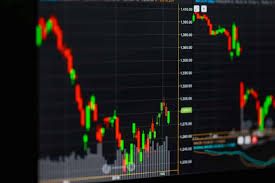
Forex trading, also known as foreign exchange trading or currency trading, involves buying and selling currencies to profit from changes in their values. It is one of the largest financial markets globally, with a daily trading volume exceeding $6 trillion. For those unfamiliar with the concept, forex trading explained FX Trading UZ serves as an excellent resource to delve deeper into the intricacies of forex trading.
Understanding Forex Trading
At its core, forex trading entails exchanging one currency for another. It operates on a simple principle: when you believe that one currency will strengthen against another, you can buy that currency while simultaneously selling the other one. This process is carried out in currency pairs; for example, the euro against the US dollar (EUR/USD) or the British pound against the Japanese yen (GBP/JPY).
The Mechanics of Forex Trading
Forex trading occurs over-the-counter (OTC), meaning it does not take place on a centralized exchange like stocks. Instead, transactions are conducted electronically via a network of banks, financial institutions, and individual traders worldwide. Trading is available 24 hours a day during weekdays, allowing traders from different time zones to participate at their convenience.
Currency Pairs
In forex, currencies are traded in pairs. Each pair consists of a base currency and a quote currency. The base currency is the first currency in the pair, while the quote currency is the second. The value of a currency pair reflects how much of the quote currency is needed to purchase one unit of the base currency. For instance, in the EUR/USD pair, if the exchange rate is 1.20, it means €1 can be exchanged for $1.20.
Types of Currency Pairs
Currency pairs are classified into three categories: major, minor, and exotic pairs. Major pairs include the most widely traded currencies, such as EUR/USD, USD/JPY, and GBP/USD. Minor pairs are less popular and do not involve the US dollar, such as EUR/GBP and AUD/NZD. Exotic pairs involve a major currency paired with a currency from a developing economy, like USD/SGD or EUR/TRY.
Key Concepts in Forex Trading
To be successful in forex trading, it is essential to understand several fundamental concepts:
Leverage
Leverage allows traders to control a larger position with a smaller amount of capital. It is expressed as a ratio, for example, 100:1 means that for every $1 you invest, you can trade $100. While leverage can amplify profits, it also increases the risk of significant losses.
Margin
Margin is the amount of money required to open a leveraged position. It is usually a percentage of the total trade value. Traders must maintain a certain level of margin in their accounts to keep their positions open. Failing to meet margin requirements may lead to a margin call, forcing traders to deposit more funds or close their positions.
Spread
The spread is the difference between the buy (ask) price and the sell (bid) price of a currency pair. It represents the cost of trading and can vary based on market conditions, liquidity, and the broker used. Spreads can be fixed or variable, with variable spreads often widening during high volatility periods.
Pips
A pip (percentage in point) is the smallest price movement in a currency pair. Most currency pairs are quoted to four decimal places, with the last decimal representing a pip. For instance, if the EUR/USD changes from 1.1200 to 1.1201, it has moved one pip.

Forex Trading Strategies
To navigate the forex market effectively, traders often adopt various strategies based on their trading goals, risk tolerance, and market analysis. Here are some popular trading strategies:
Day Trading
Day trading involves opening and closing positions within the same trading day. Day traders aim to capitalize on short-term price movements and typically do not hold positions overnight to minimize the risk associated with market fluctuations outside trading hours.
Swing Trading
Swing traders hold positions for several days or weeks, seeking to profit from expected price swings. This strategy relies on technical analysis and market trends, allowing traders to capture medium-term movements in currency prices.
Scalping
Scalping is a high-frequency trading strategy that involves making numerous small trades throughout the day, with the intent to capture tiny price changes. Scalpers often rely on technical indicators and fast execution speeds to maximize their profits.
Position Trading
This long-term trading strategy involves holding positions for weeks, months, or even years. Position traders focus on fundamental analysis, considering economic indicators, central bank policies, and geopolitical events to make informed decisions.
Risk Management in Forex Trading
Successful forex trading involves understanding and managing risk. Here are some key risk management strategies:
Set Stop-Loss Orders
Placing stop-loss orders helps limit potential losses by automatically closing a position when the market moves against you. This tool is essential for protecting your capital and managing risk in volatile markets.
Position Sizing
Determining the appropriate position size for each trade is crucial. This involves calculating the risk you are willing to take per trade and adjusting your position size accordingly. A common rule is to risk no more than 1-2% of your trading capital on any single trade.
Diversification
Diversifying your trading portfolio by trading multiple currency pairs can help spread risk. By not concentrating your capital on a single trade or currency pair, you can reduce the impact of adverse market movements.
Conclusion
Forex trading offers exciting opportunities, but it also comes with inherent risks. Understanding the fundamental concepts, strategies, and effective risk management techniques is essential for success in this dynamic market. Whether you are a beginner or an experienced trader, continuous learning and adaptation to changing market conditions will be your keys to profitability in forex trading.
